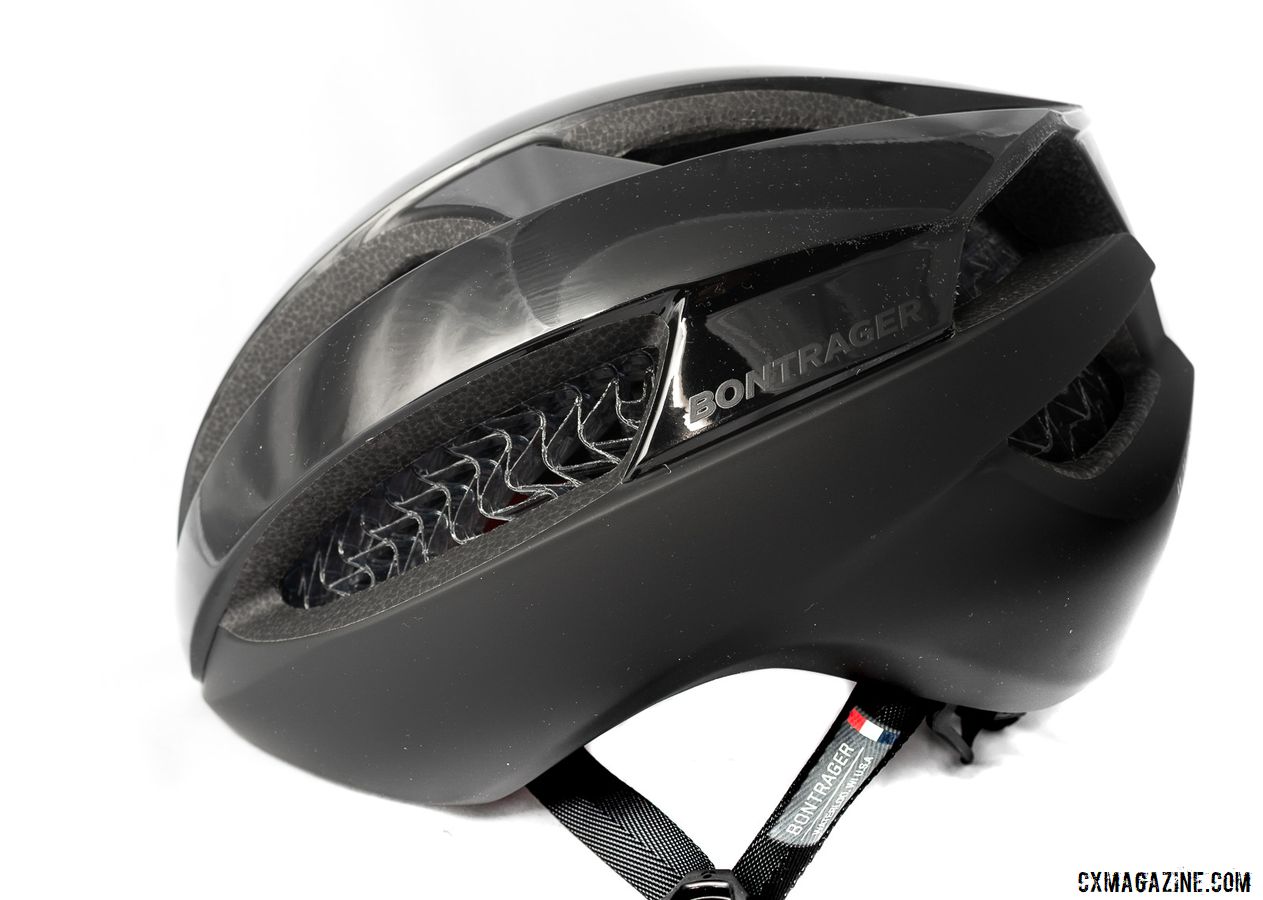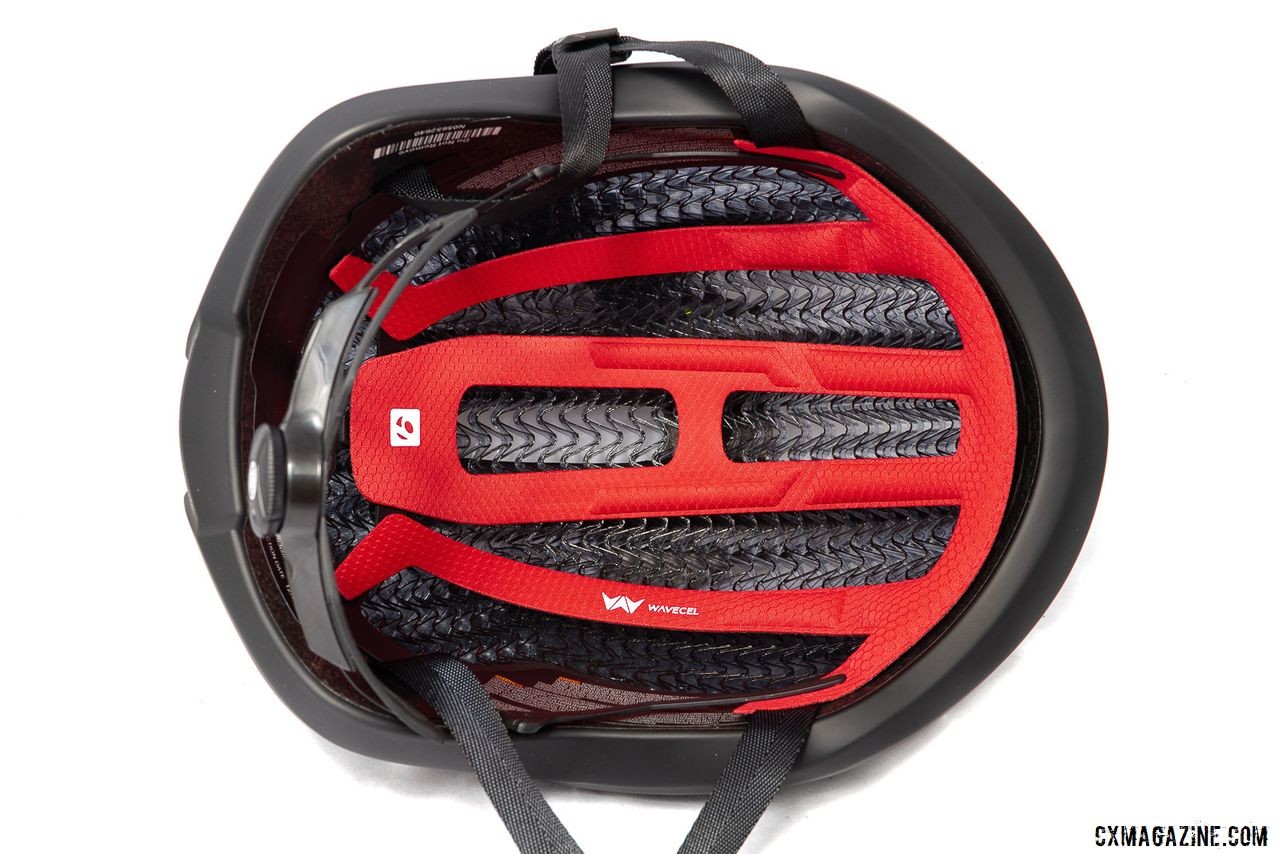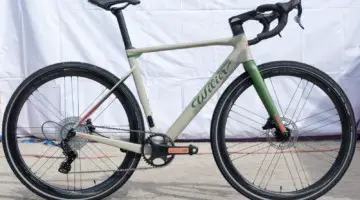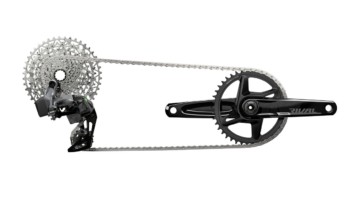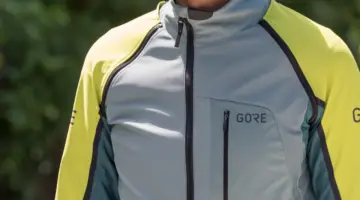Trek’s Bontrager brand captured attention with its embargoed launch of its WaveCel line of helmets.
The helmets rely on a semi-flexible mesh structure for shock absorption that is not unlike the honeycomb Koroyd structure we saw used in Smith helmets. Bontrager claims the Wave Cells helmets offer 48 times the concussion prevention of a standard EPS foam helmet.
That statistic jumped out to anyone who values their brain and required a few brain cells to comprehend. Who doesn’t want to increase their chances of reducing a concussion? Many of us have suffered through the post-concussion symptoms enough to never want to go through that again.
Bontrager initially launched four helmets with the WaveCel tech. The Specter is its entry-level road bike helmet, the Charge is a commuter, the Blaze a mountain bike helmet and the XXX a road helmet.
Our team received two of the helmets. One a Specter and the other a purple limited-edition XXX road helmet. We offer our first impressions of the helmets with the new WaveCel system.
Bontrager Specter WaveCel Helmet
The Specter is Bontrager’s most affordable WaveCel offering, and it also happens to be the top-rated model by Virginia Tech’s independent test results that evaluate both impact and rotational protection.
While Trek’s marketing might leave you with the impression that non-WaveCel helmets should rate far worse, in reality, Virginia Tech’s testing shows that other helmets also greatly outperform the standard EPS foam that Bontrager compares the WaveCel to.
Proof? The Specter rates a 10.8 (lower is better), while a non-WaveCel MIPS-equipped Bontrager Ballista helmet rates next at a 10.9. We don’t think based on the ratings you can conclude the Specter is 1 percent better (1-10.8/10.9), but who doesn’t want to give their brain the best chance of avoiding damage?
As Virginia Tech states itself, “Wearing a helmet is most important,” more important than obsessing over the best score. To ensure the best chance of wearing a helmet, you want it to be comfortable, well-ventilated, and compatible with other cycling accessories.
The WaveCel tech is a honeycomb-like layer between your head and the helmet surface designed to crumple upon impact and then direct the impact away from your head.
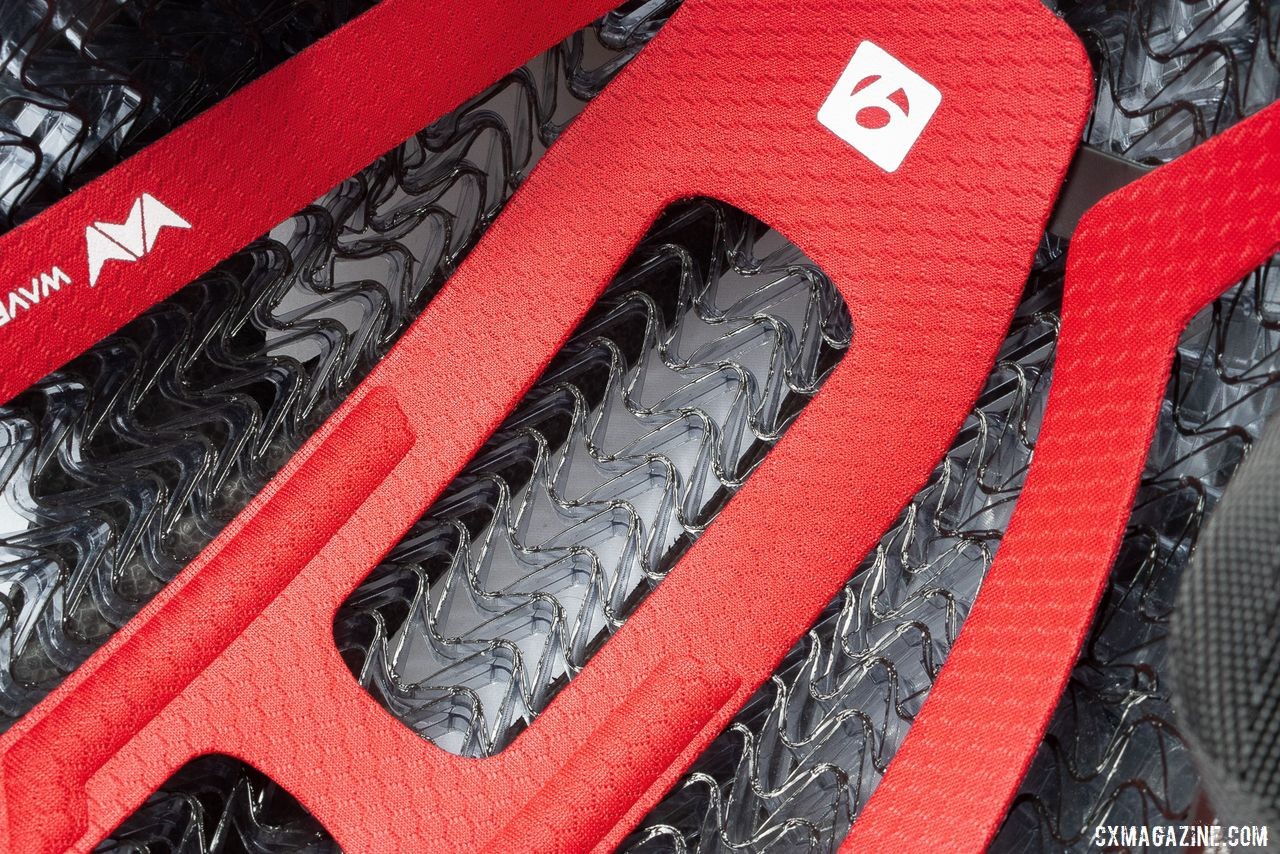
Bontrager’s Specter WaveCel cycling helmet is said to reduce concussions. Your headache might come in the form of cleaning it after a very muddy day. © A. Yee / Cyclocross Magazine
Although we luckily haven’t tested the concussion protection of these helmets yet, we can comment on the fit and comfort.
The Specter’s Boa adjustment on the helmet’s rear basket offers plenty of adjustment and is easy to tighten and loosen on a ride. It looks to be durable.
Our only complaint is that the plastic fingers that grab the back of your head are relatively stiff and don’t have the smoothest or softest edges—depending on your head shape—they may keep reminding you they’re there.
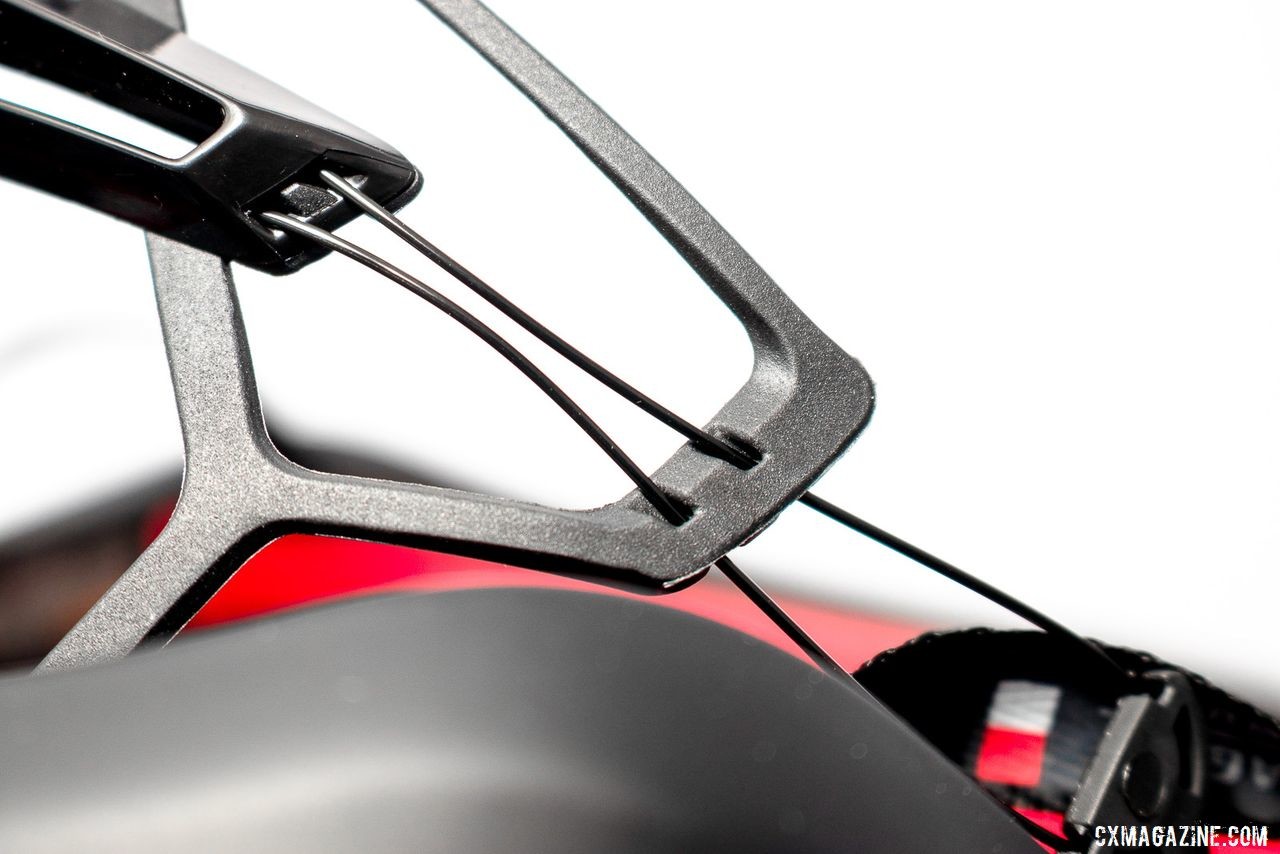
The Bontrager’s Specter WaveCel cycling helmet’s Boa cage adjustment offers a custom fit. The plastic basket might be a little stiff on your noggin. © A. Yee / Cyclocross Magazine
The Specter offers plenty of ventilation. With ample, large vents, there are lots of opportunities for heat to escape. Compared to a non-WaveCel helmet, the structure blocks a bit of a headwind from hitting your head, just as we’ve experienced with Koroyd, but it’s arguable the WaveCel structure allows for larger vents while providing brain protection.
Helmet fit depends on many variables, but Bontrager seems to accommodate both round and football-shaped heads quite well.
Some cyclists may run into issues with some sunglasses, however.
The Specter offers plenty of coverage at the forehead and above the ears, but it can interfere with your shades. Ours sat on the leading edge of a casual sunglass’ temples, and while riding, especially on bumpy terrain, the helmet kept bumping the sunglasses down. We’d recommend grabbing your favorite shades and heading to your local Trek dealer to confirm a good fit.
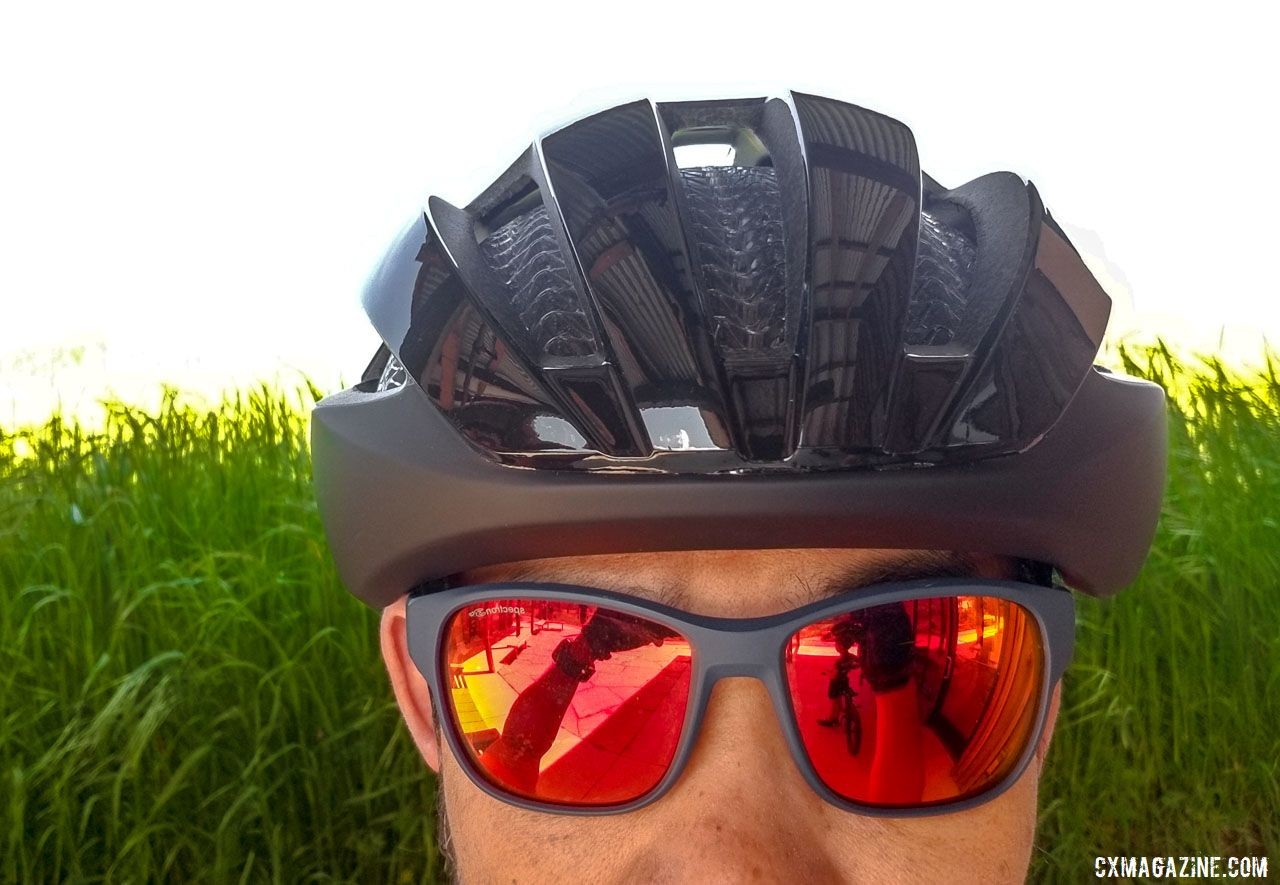
The $149 Bontrager WaveCel Specter helmet has a medium profile and comprehensive coverage, but the sides can interfere with your shades. © Cyclocross Magazine
All the protective features and the convenient, magnetic buckle come at a bit of a cost in terms of weight. Our size Large Specter test helmet tipped the scales at 392 grams. That’s as much as 130g heavier than other helmets we’ve ridden, but who wants to trade gram savings for brain damage?
Price: $150 (on sale for $120 at publication)
Weight: 392g, size Large
Vents: 12
More Info: trekbikes.com
Bontrager’s XXX WaveCel Helmet
The XXX is Bontrager’s top-of-the-line aero road helmet worn by the Trek-Segafredo women and men’s WorldTour teams. It is also the one you saw Trek-sponsored athletes showing off on social media during the company’s expansive launch of the new tech a few weeks ago.
Right now, the XXX is available in five colors and then an LTD edition that is a glossy purple. Bontrager sent us the limited-edition model for review.
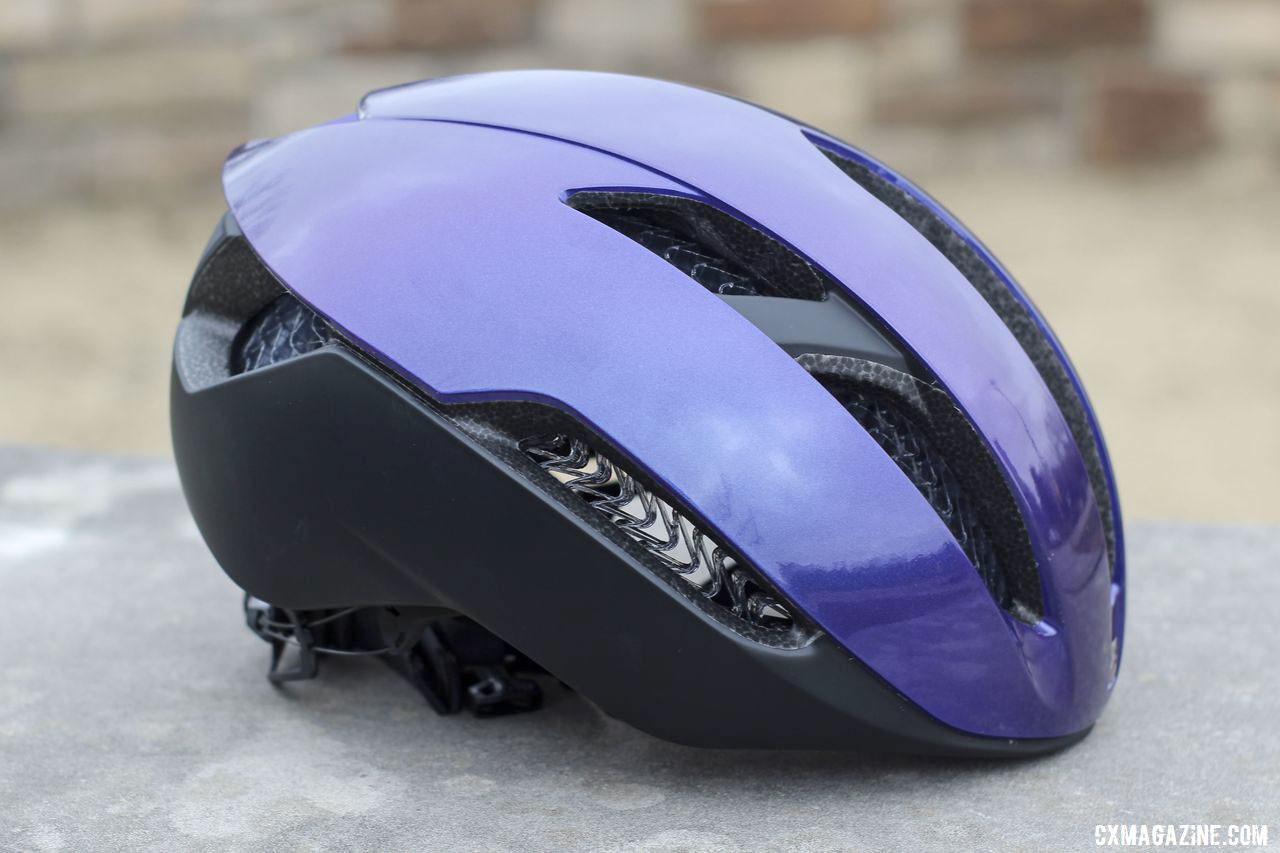
The XXX is Bontrager’s high-end road helmet with the WaveCel tech. Bontrager XXX WaveCel LTD helmet. © Z. Schuster / Cyclocross Magazine
Immediately noticeable was the XXX sits deep on your head. It feels kind of like putting on something like a motorcycle helmet versus a traditional lightweight bicycle helmet. As we observed with the Specter, this is probably a good thing, because the XXX gives the feeling of protecting your entire head.
The Boa tension dial is a nice addition that allows you to dial in the perfect fit. The rear cradle did not press into our head, but at the same time, it could probably be a bit more comfortable.
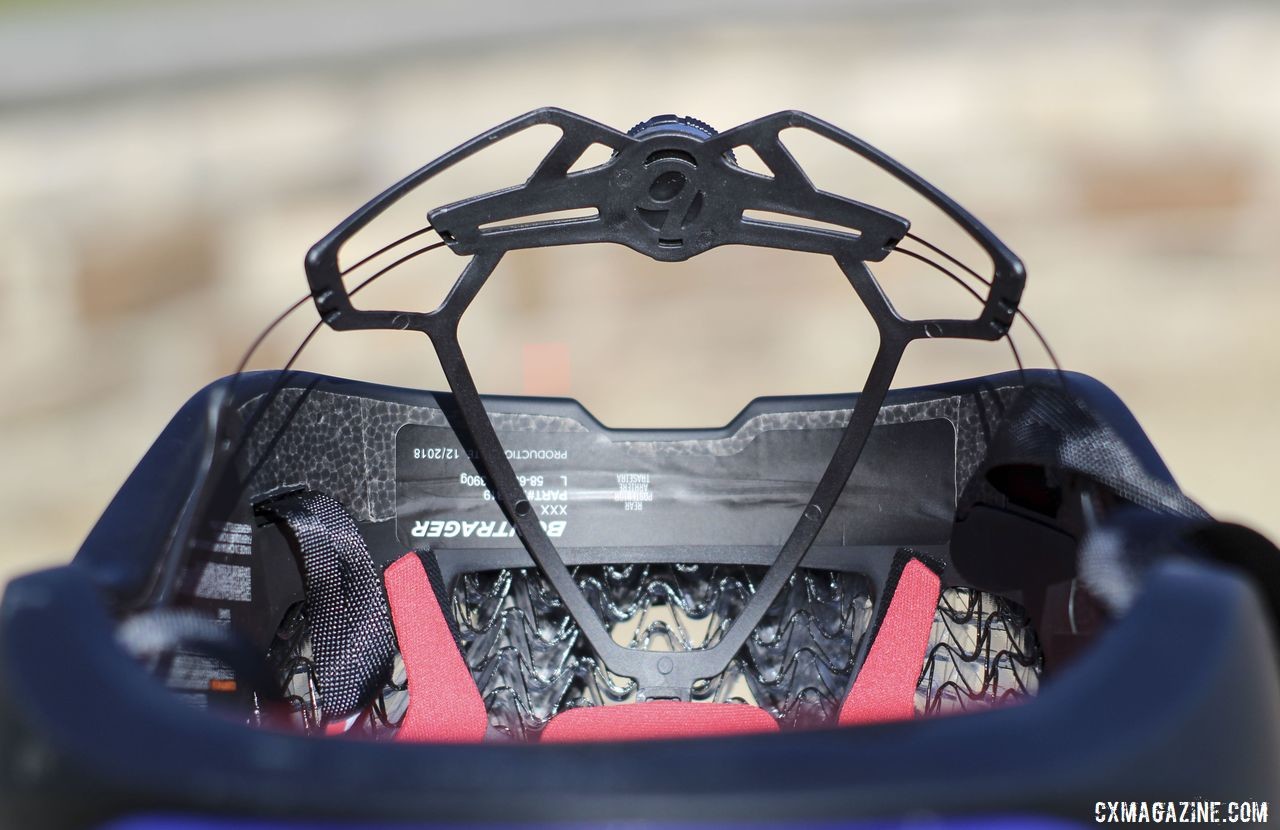
The Boa dial helps get the perfect fit, but the rear cradle could be more comfortable. Bontrager XXX WaveCel LTD helmet. © Z. Schuster / Cyclocross Magazine
The five channels on top of the helmet provide ventilation while still allowing the helmet to live up to its aero design. We admittedly have not had warm enough temperatures to test the ventilation in real-world hot temperatures.
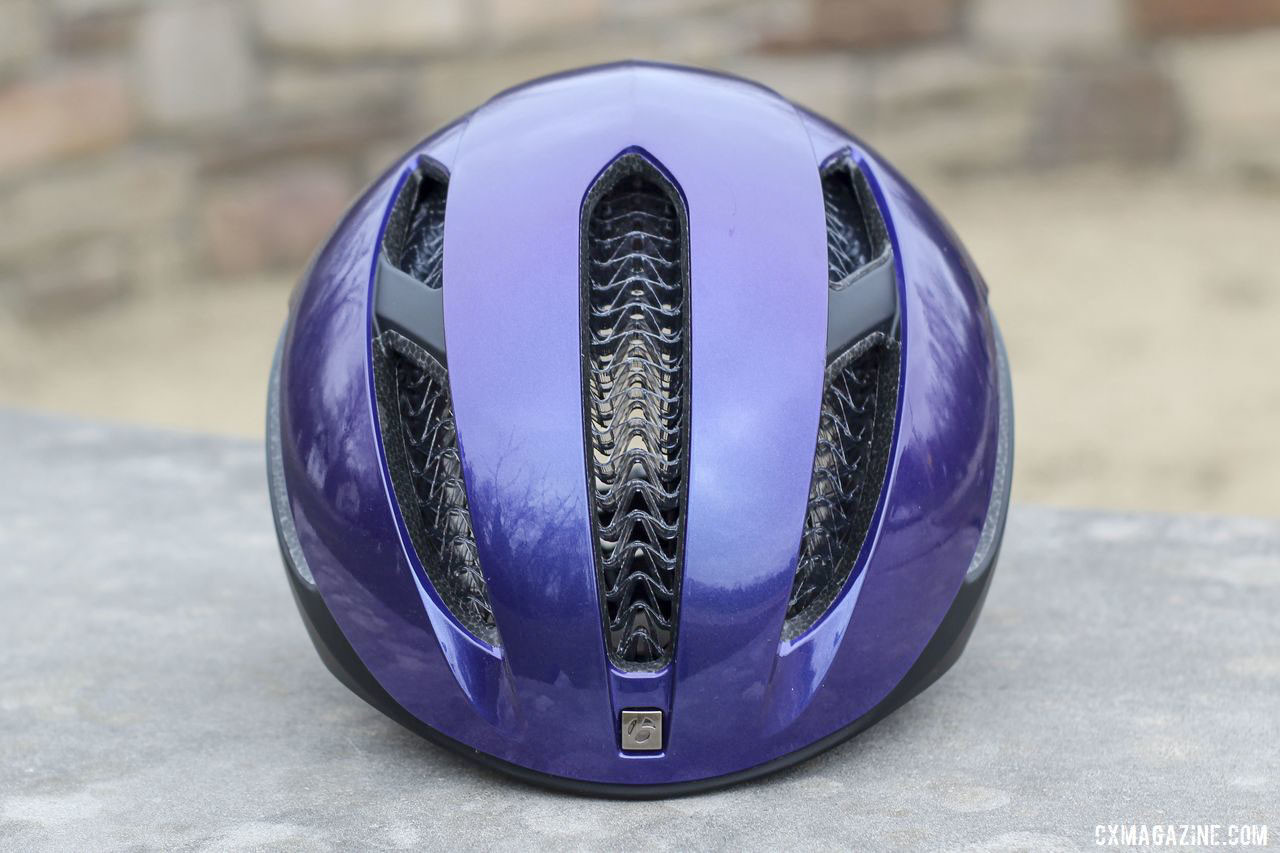
The XXX helmet has five channels for ventilation. Bontrager XXX WaveCel LTD helmet. © Z. Schuster / Cyclocross Magazine
Thanks to Winter Storm Wesley and winter in April, our tester did (sadly) have some time to test the XXX in cyclocrossy conditions.
Because the helmet sits down on your head, squeezing in a thick headband was tough, and ski goggles for commuting were also a tight squeeze. Again, like with the Specter, it is probably a good idea to try the XXX on with your chosen headgear to make sure it will provide a good fit.
The other thing that is immediately noticeable about the XXX WaveCel helmet is its weight. The difference in weight between most bike helmets is whatever, but the XXX checks in 405g that definitely feels heavier than helmets such as the Bell Z20 MIPS we just reviewed.
Will the extra weight affect your neck after a 100-mile gravel race? It might. We will try it out during the upcoming gravel season.
Price: $300 (on sale for $240 at publication)
Weight: 405g, size Large
Vents: 11
More Info: trekbikes.com
The Verdict
Trek’s impressive rollout of its new WaveCel helmet technology helped start a new discussion about head safety. The research presented along with the launch suggests the WaveCel tech will provide ample protection against crashes.
The helmets themselves provide a snug fit that is easily adjustable with the Boa dial. The WaveCel helmets fit around the head, not just on top of it, giving the feeling of full head protection. That extra protection comes at a cost of up to 100g more than other lightweight helmets. The helmets do sit low on the head, so fitting eyewear and other headgear might be a tough fit.
The question for consumers is if the extra weight is worth the extra protection suggested by the science and the feeling of protection from the helmet that hugs your head.
For a closer look at both helmets, see the photo gallery below.
Andrew Yee tested the Specter, Zachary Schuster the XXX.
Bontrager Specter and XXX WaveCel Helmets













